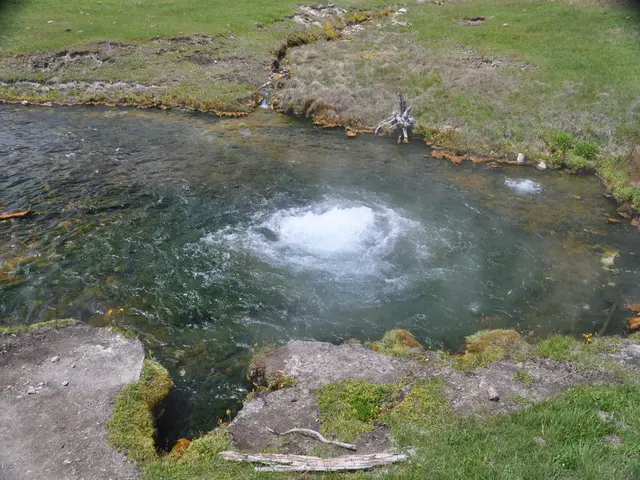"Storm chasing found its way into prominence, thanks to 'Twisters', but read on to discover the true essence of this thrilling pursuit"
In the vast expanse of the American skies, a group of intrepid explorers embark on a unique adventure – storm chasing. This exhilarating pursuit, which has gained popularity over the years, is a dance with the unpredictable forces of nature.
Storms, as it turns out, are not all created equal. According to Kim George, different storms in various months and locations can move at different speeds. Spring storms, generally, tend to move faster. However, the spring storms in the High Plains don't follow suit, moving at a slower pace.
The allure of storm chasing is undeniable, but it comes with its fair share of risks. Safety is paramount for experienced chasers, a lesson echoed by all who venture into this thrilling realm.
The first storm chaser in the USA was David Hoadley, who began tracking severe weather in the 1950s. His pioneering spirit paved the way for others, such as Erik Burns, the owner and tour director of Tornadic Expeditions. Burns describes storm chasing as involving a lot of driving and a little bit of action.
Tornado Alley, the region known for extreme weather, doesn't have officially agreed upon boundaries. However, research suggests that tornadoes are moving eastwards towards the Mississippi Valley. This shift, while intriguing, is not definitively linked to climate change, although Erik Burns believes that any potential impact of climate change on tornado activity is likely to result in fewer tornadoes.
For those new to storm chasing, preparation is key. Taking part in storm spotting training, meteorology classes, and chasing with experienced storm chasers before venturing out on one's own is recommended. The National Weather Service offers free training in storm spotting and meteorology classes for those interested.
Storm chasers use a variety of tactics to stay safe. When they register thunder and lightning strikes, indicating they're too close to a tornado, they employ planned escape routes. The visibility of tornadoes can vary, with storm chasers sometimes getting within a mile and a half for better visibility.
The eastern Dakotas provide the best chasing conditions, but Nebraska has produced the most photogenic tornadoes, according to Ronald Stenz. This region, along with states like Texas, Kansas, New Mexico, Colorado, Iowa, North and South Dakota, Montana, Wyoming, and Minnesota, have been host to storm chasing tours conducted by companies like Tempest Tours.
The release of the movie "Twisters" is likely to increase interest in storm chasing expeditions. The action seen during storm chasing is amazing, according to Erik Burns, making it an experience not easily forgotten.
However, storm chasing is more than just a thrilling adventure. It's a journey through the heart of nature's most powerful displays, a testament to the resilience of those who dare to chase the storm.
Read also:
- Peptide YY (PYY): Exploring its Role in Appetite Suppression, Intestinal Health, and Cognitive Links
- Toddler Health: Rotavirus Signs, Origins, and Potential Complications
- Digestive issues and heart discomfort: Root causes and associated health conditions
- House Infernos: Deadly Hazards Surpassing the Flames








